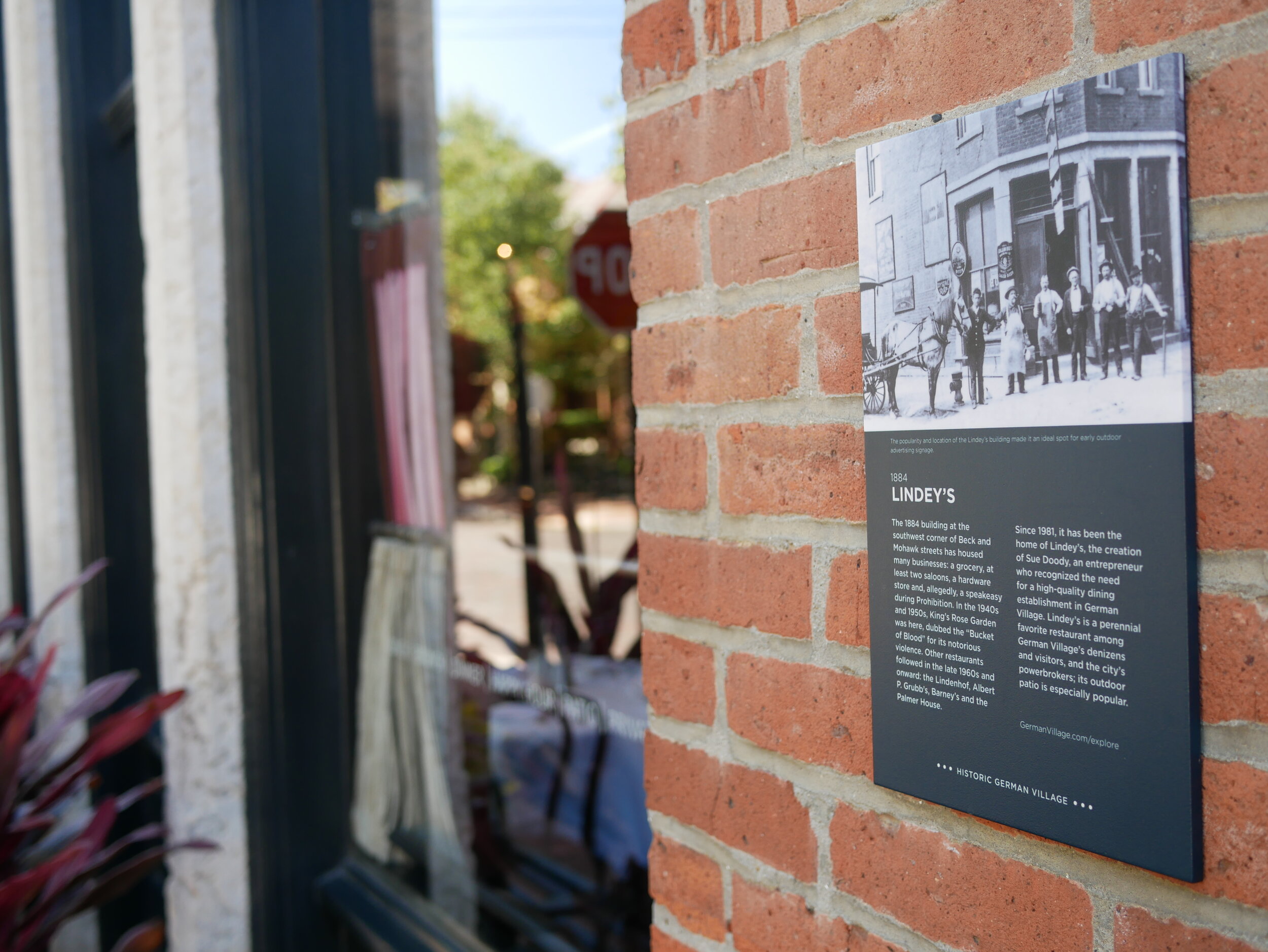
Celebrating History with The Brickline: An Urban Historic Discovery Trail
How a historic neighborhood is telling a big story.
German Village – a nationally recognized historic neighborhood in Columbus, Ohio – is one of the largest, privately funded historic districts in the U.S. Situated just South of Downtown, the neighborhood was initially platted in 1814 and was primarily developed between 1840 and 1914 when it was settled largely by German immigrants. It was added to the National Register of Historic Places, in 1974, and in 2007, was made a Preserve America Community. Today, German Village is a model of urban neighborhood preservation and revitalization.
German Village is a neighborhood rich in character and tradition, with narrow streets that were once home to German speaking stores, schools, churches, and even its own newspapers. Its caretaker, the German Village Society, founded in 1960, is responsible for the promotion, preservation and rehabilitation of the historic buildings and is dedicated to sharing the history of the neighborhood with visitors, residents, and future generations. The Society, with help from several local historic preservationists, researched and compiled the content for an immersive interpretive trail in the neighborhood known as The Brickline. The Brickline celebrates the stories of German Ethnic Heritage, Historic Preservation and Innovation, and Community building throughout the neighborhood. Originally envisioned 10 years ago by Darci Congrove and John Pribble of the German Village Guest House, the trail has been funded through Darci and John’s annual TEA 43206 fundraiser, and through a grant from the Ohio Humanities Council.
Working closely with the German Village Society and stakeholders, MKSK created and field-tested numerous design mock-ups of the proposed interpretive signs to evaluate color, context sensitivity, and scale. After being approved by the German Village Commission, the first interpretive signs were installed in the Summer of 2018, and in 2019 The Brickline is expanding with an additional 15 signs.
The story of German Village, its growth, decline and resurrection, its architecture, narrow streets, gardens, and the important figures who shaped the neighborhood can now be discovered in context, a little bit at a time throughout the neighborhood. The small Interpretive signs, just 8-inches-wide and 13-inches-tall, dot the village. Mounted to wrought iron fences and to the sides of houses and businesses, the signs are more whisper than announcement. Blending in with the overall aesthetic of the neighborhood the signs subtly invite residents and visitors alike to explore and learn about the people, places, and events that have shaped this unique neighborhood.



